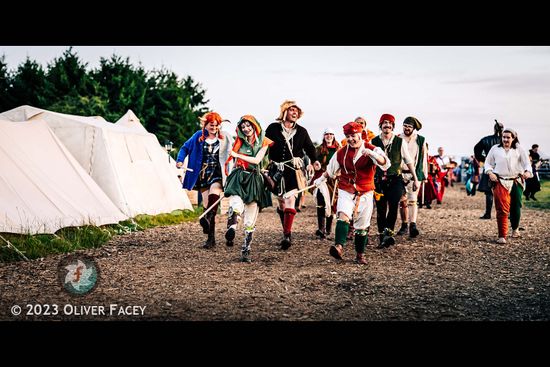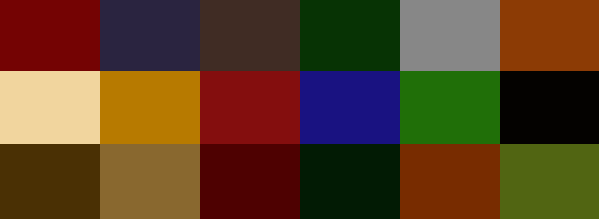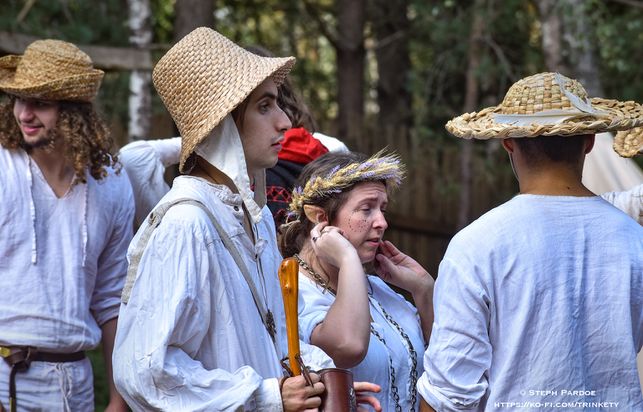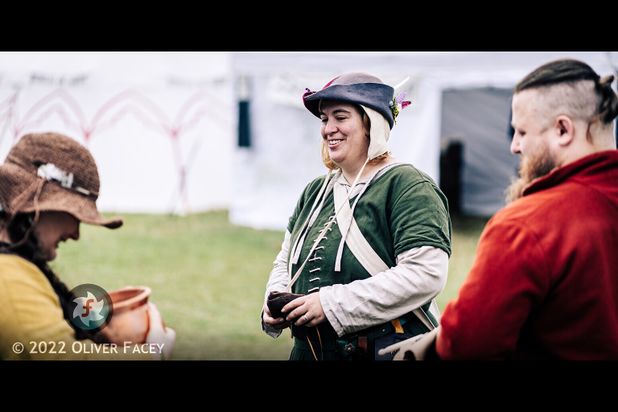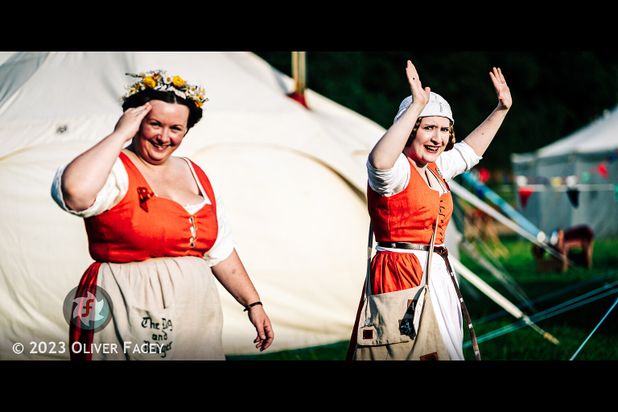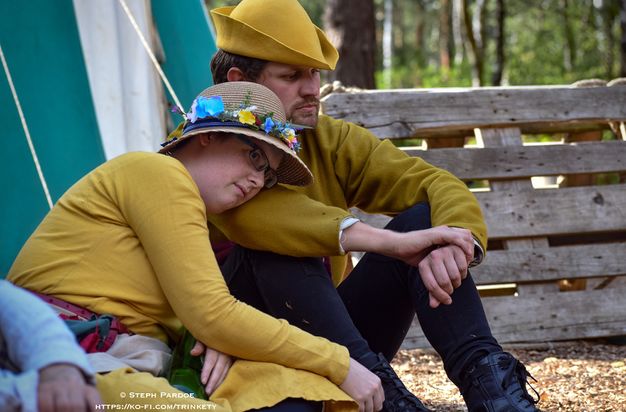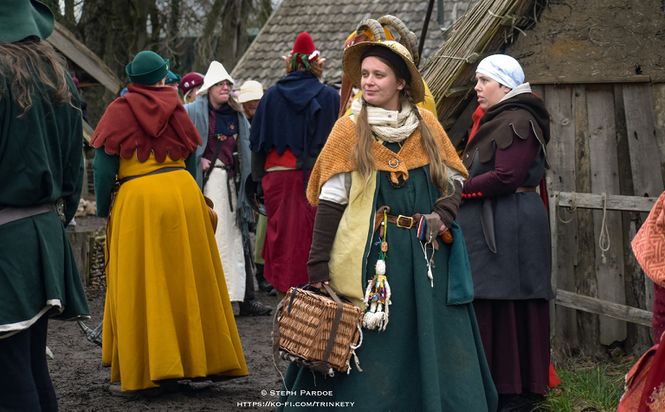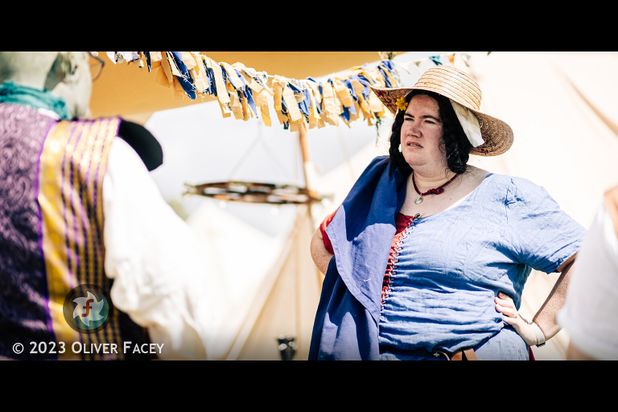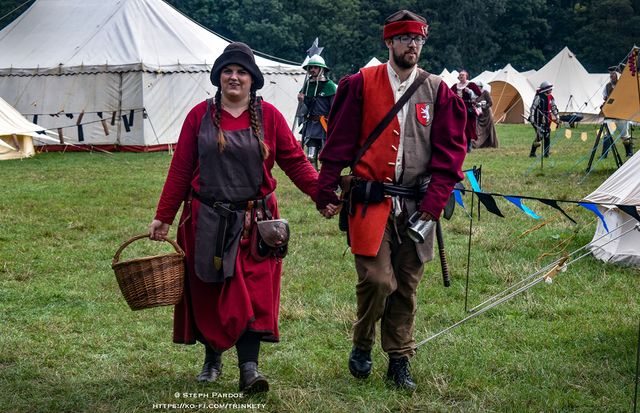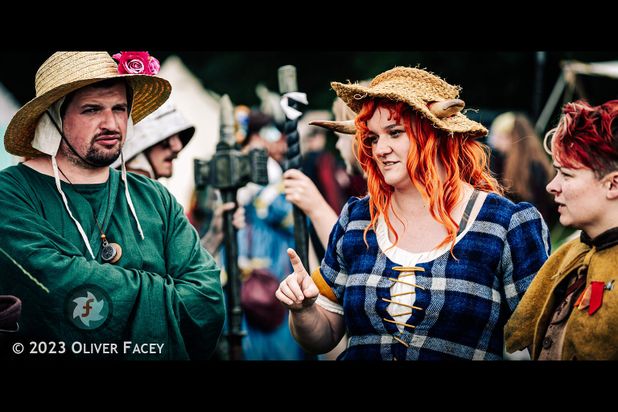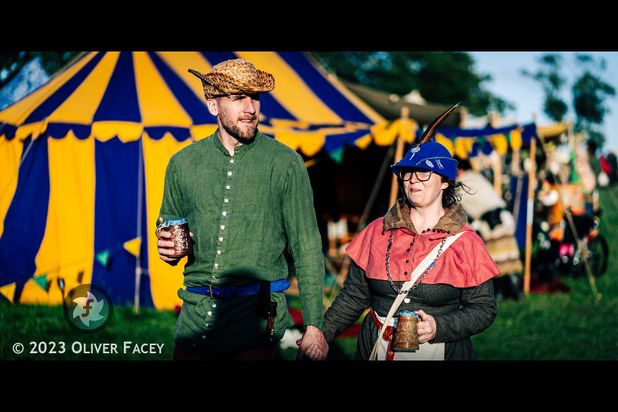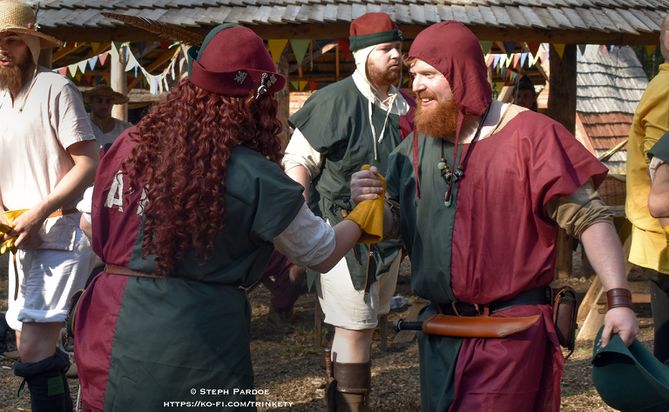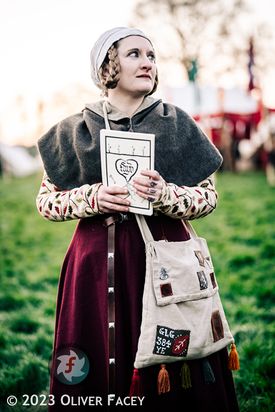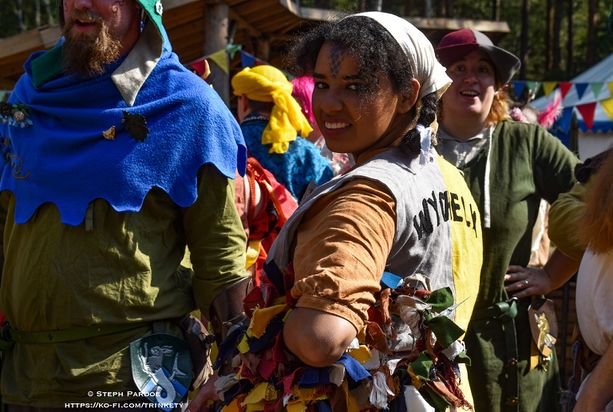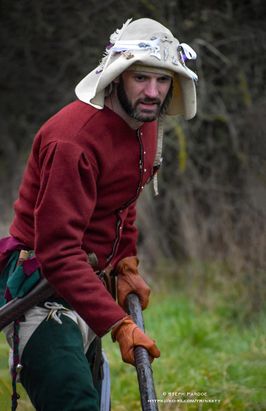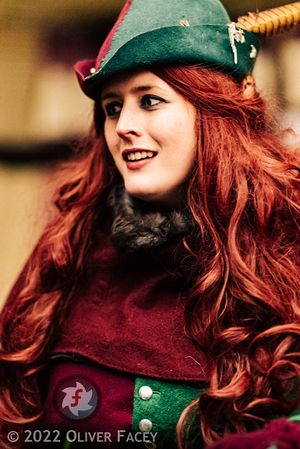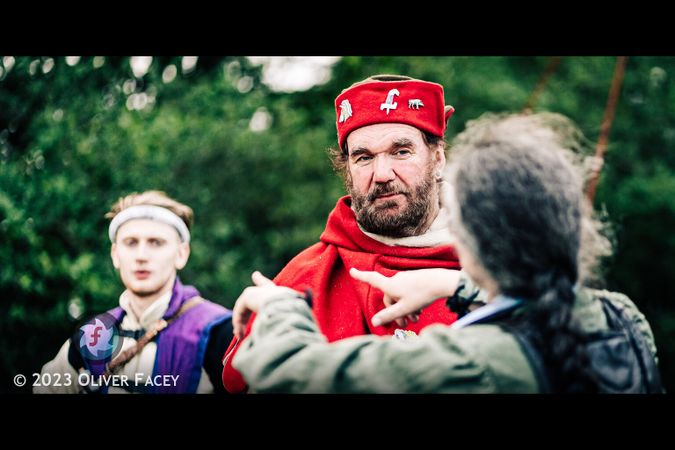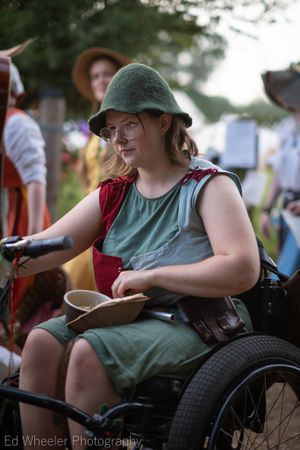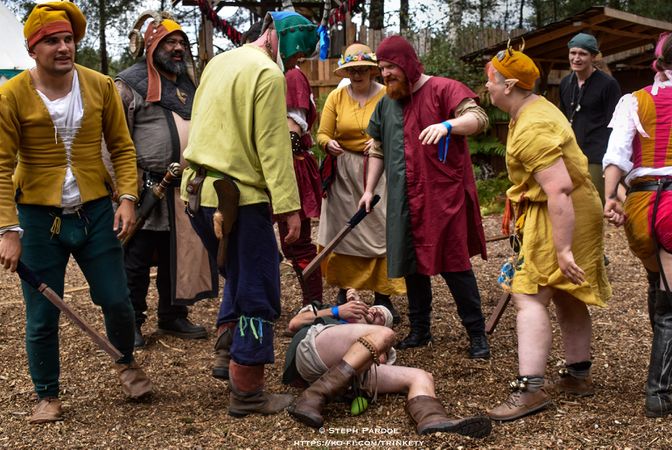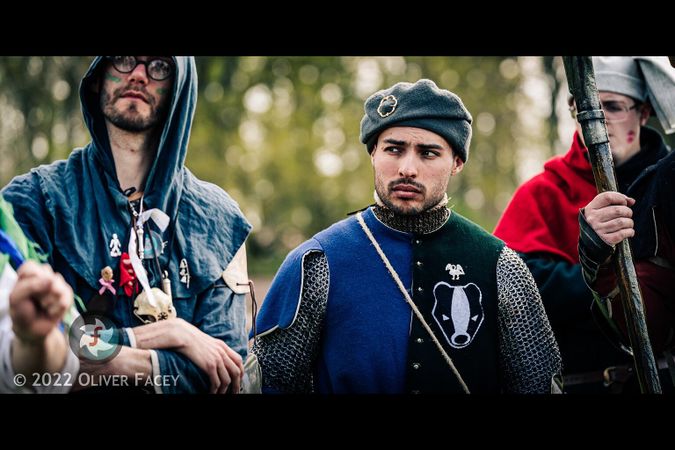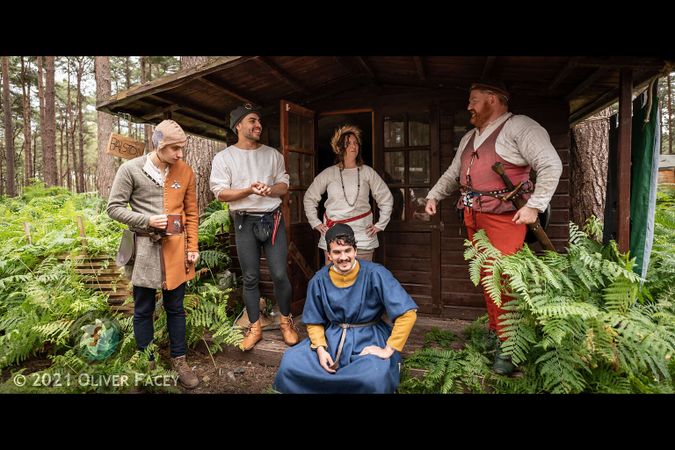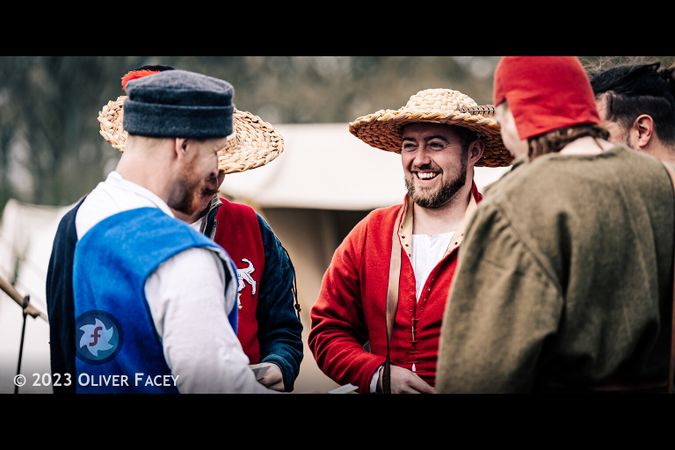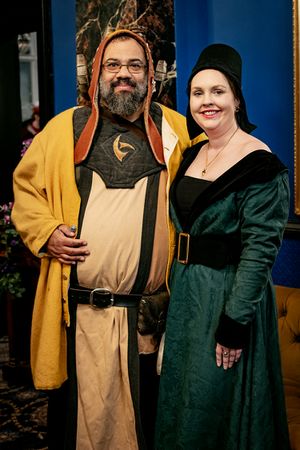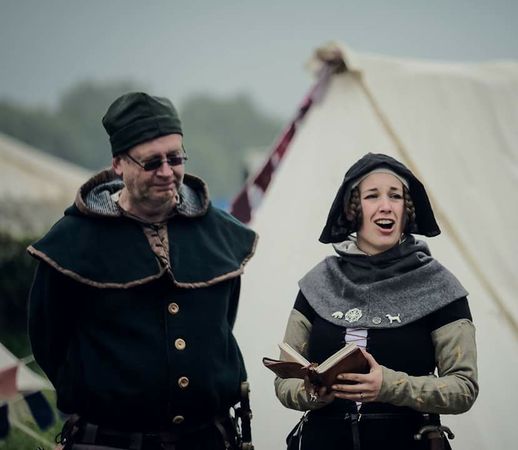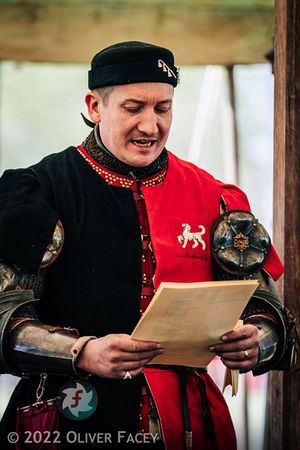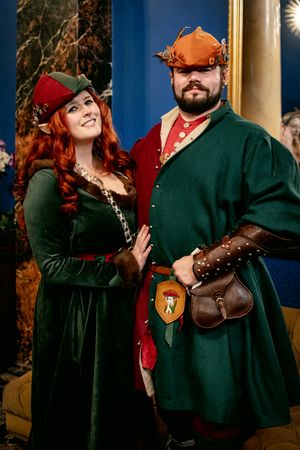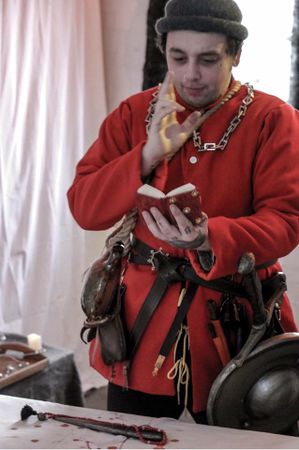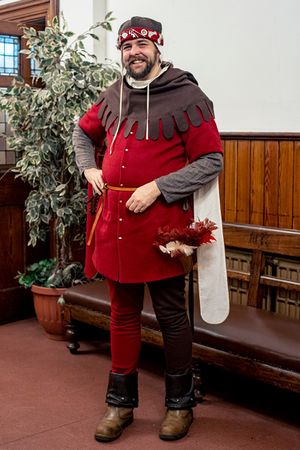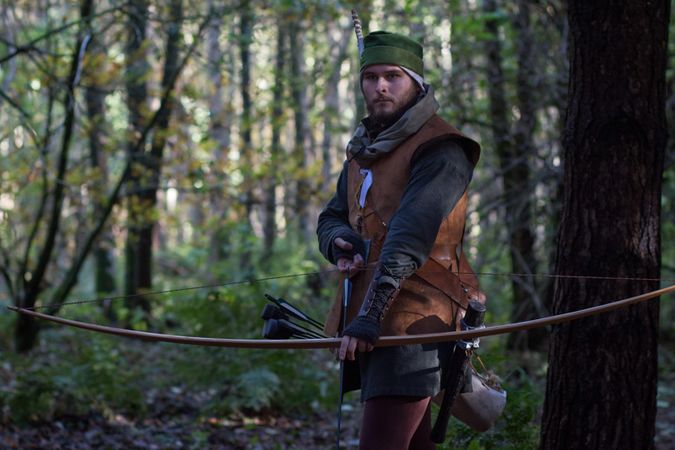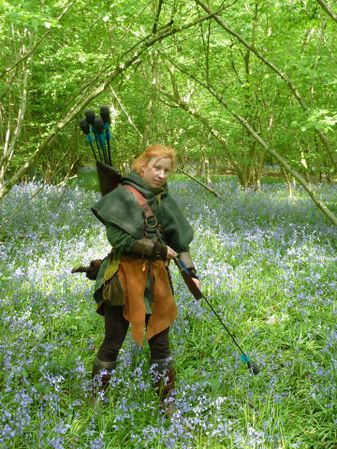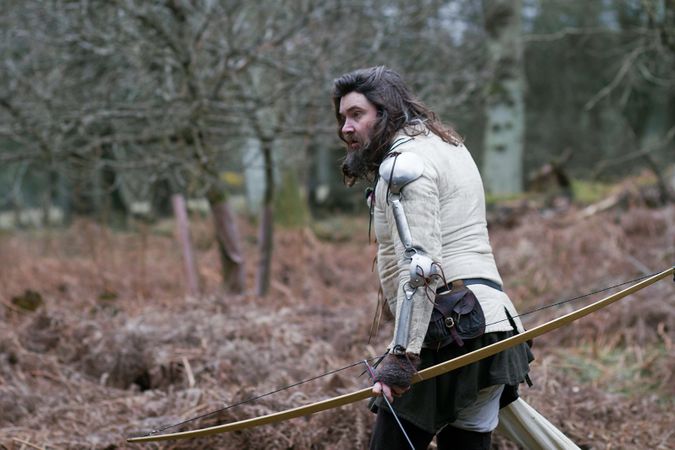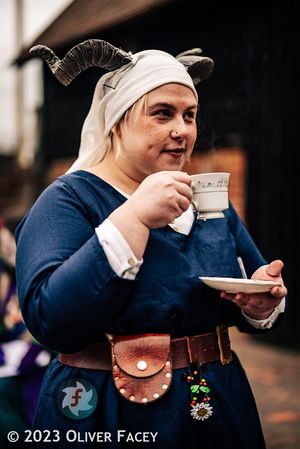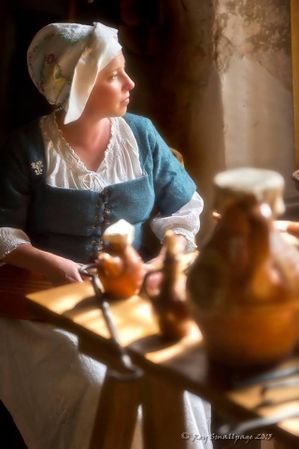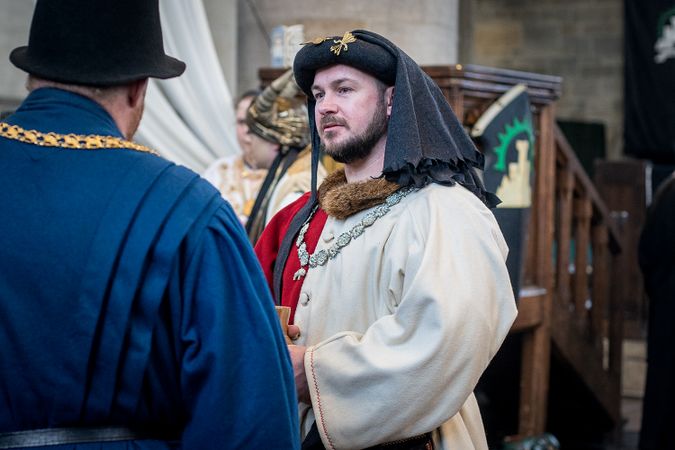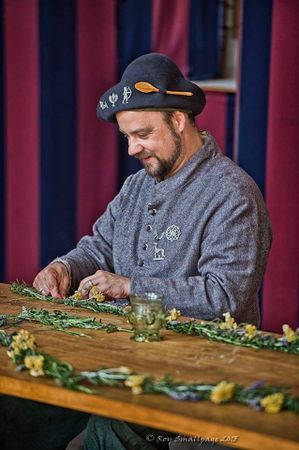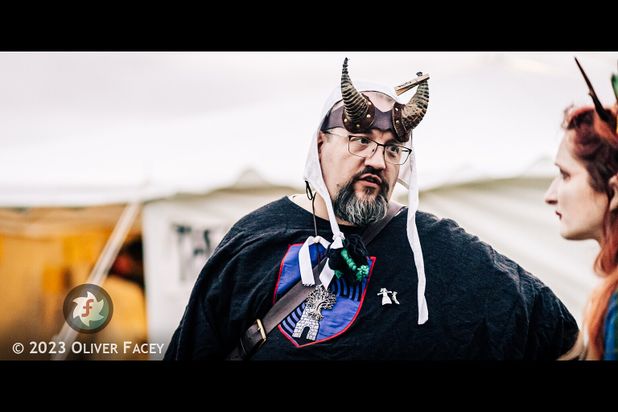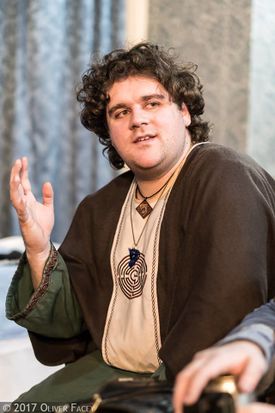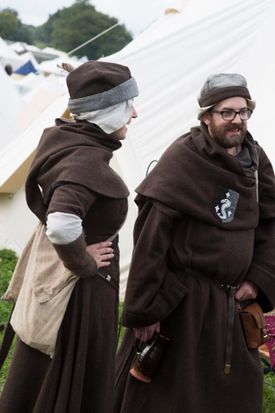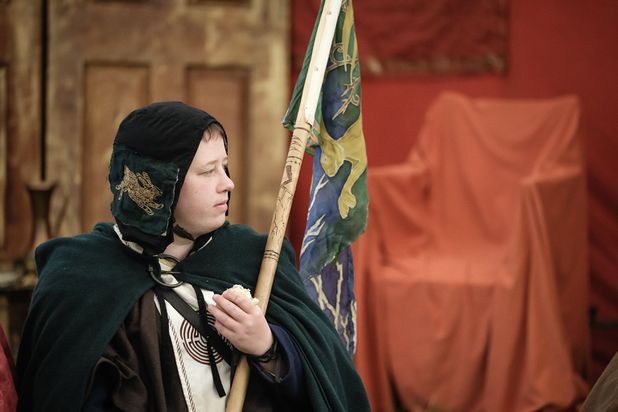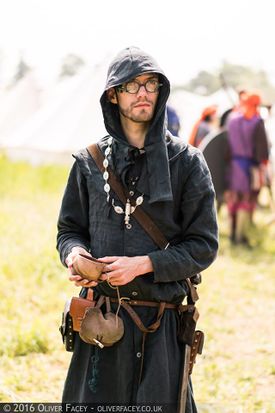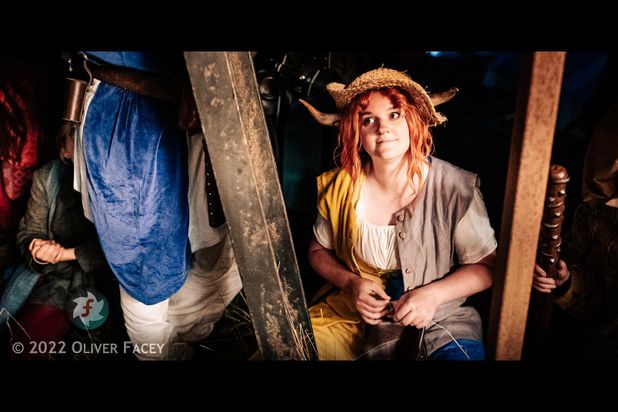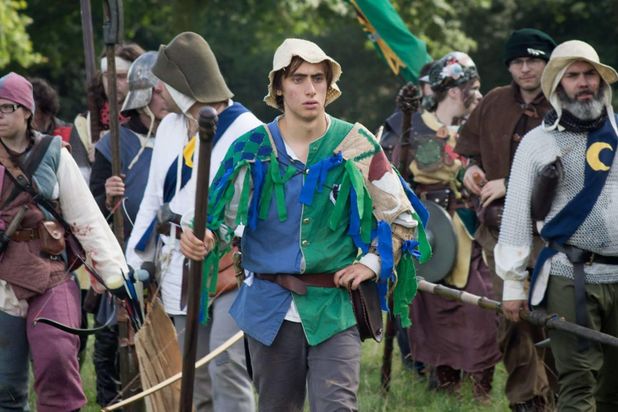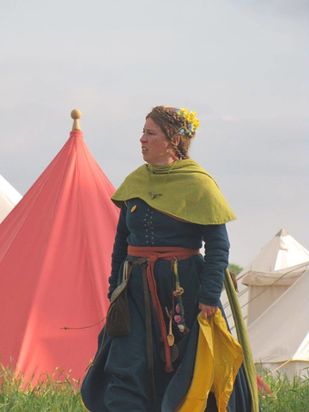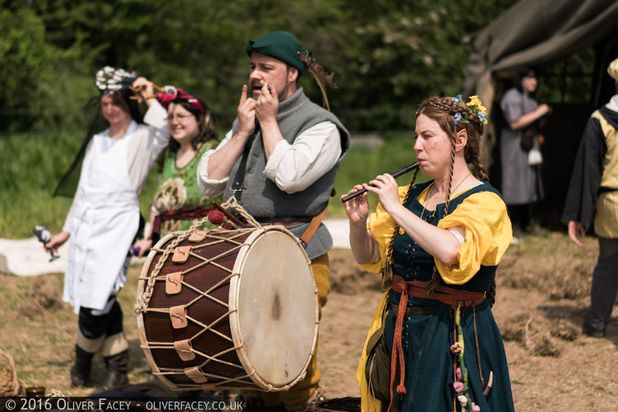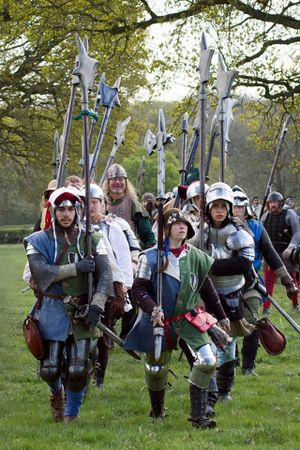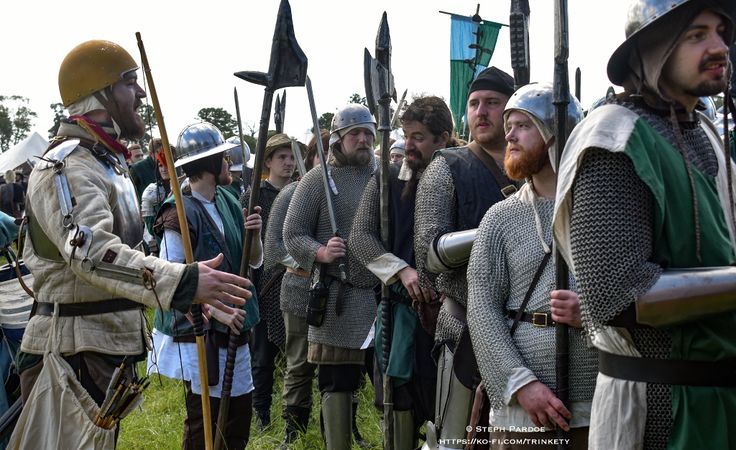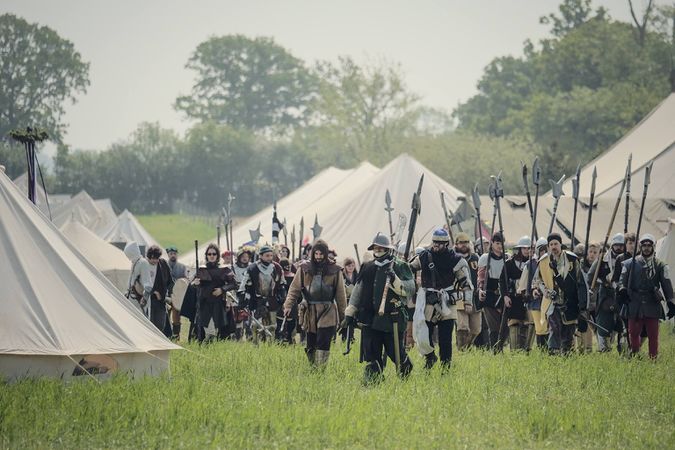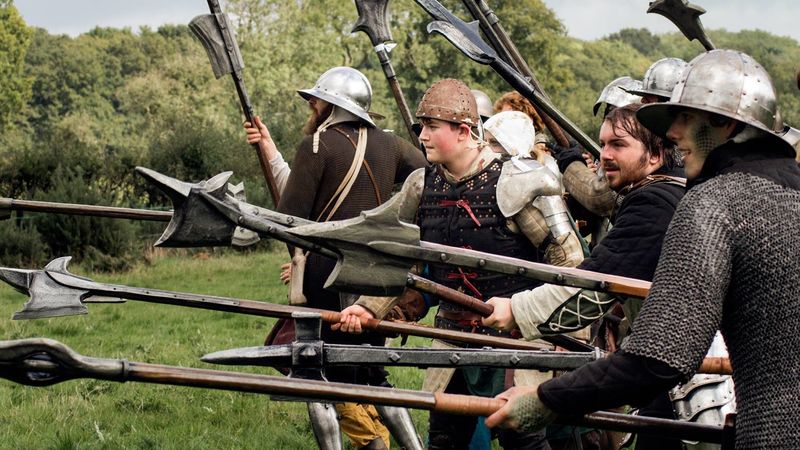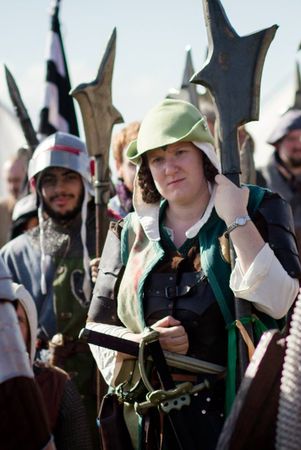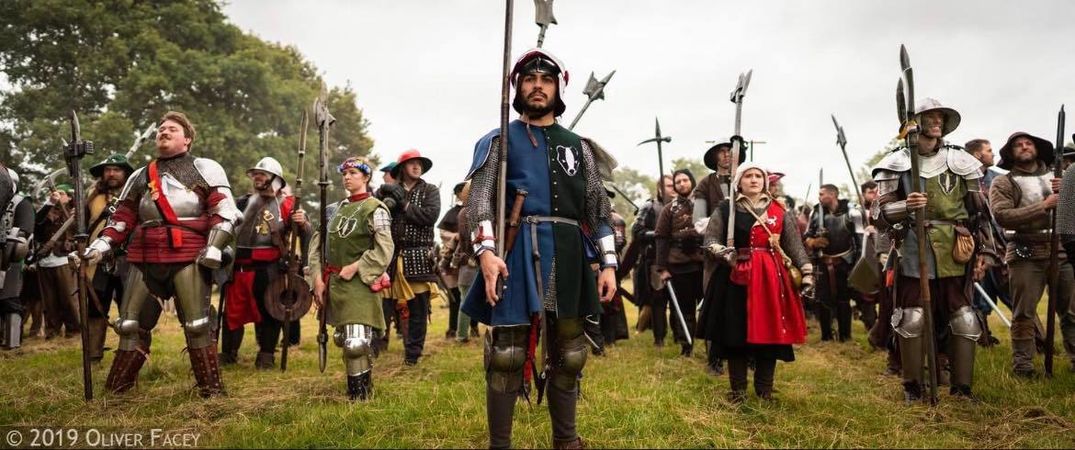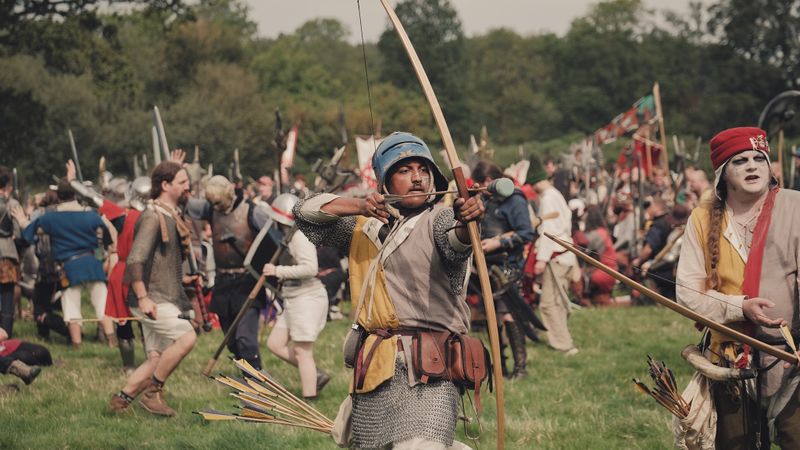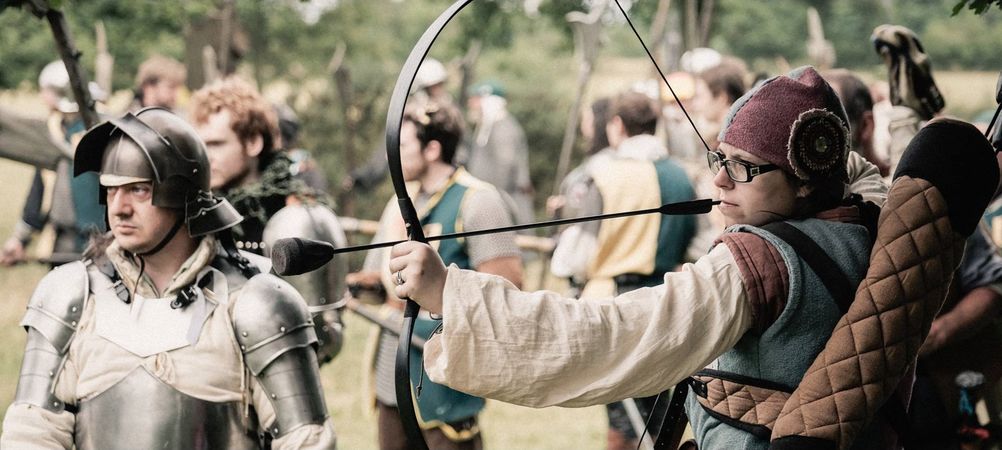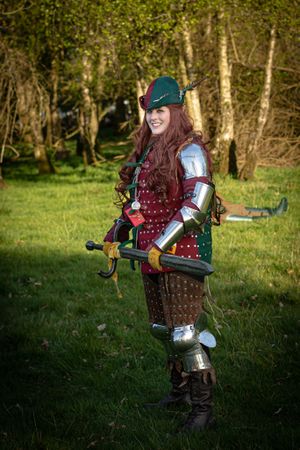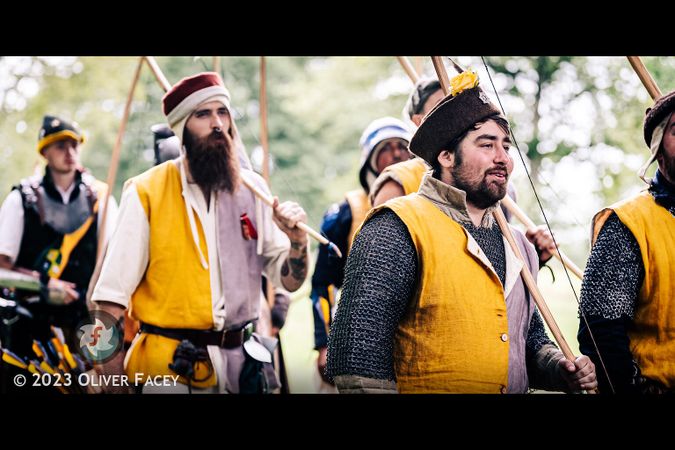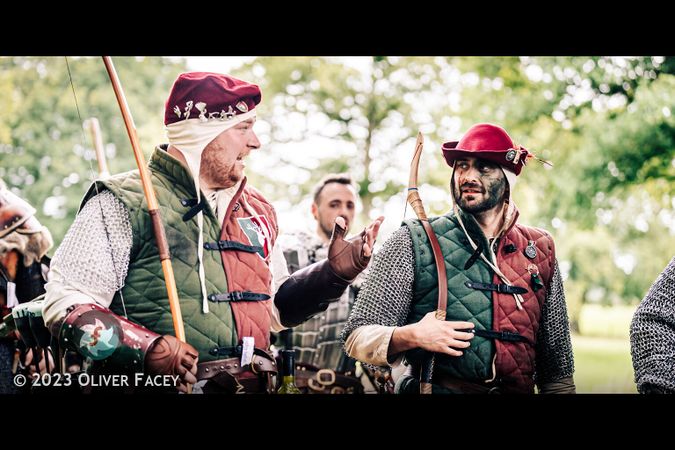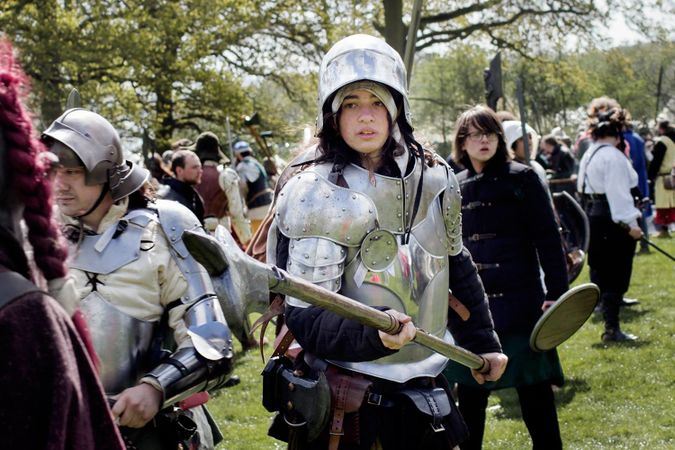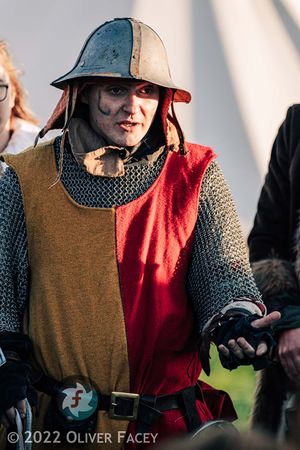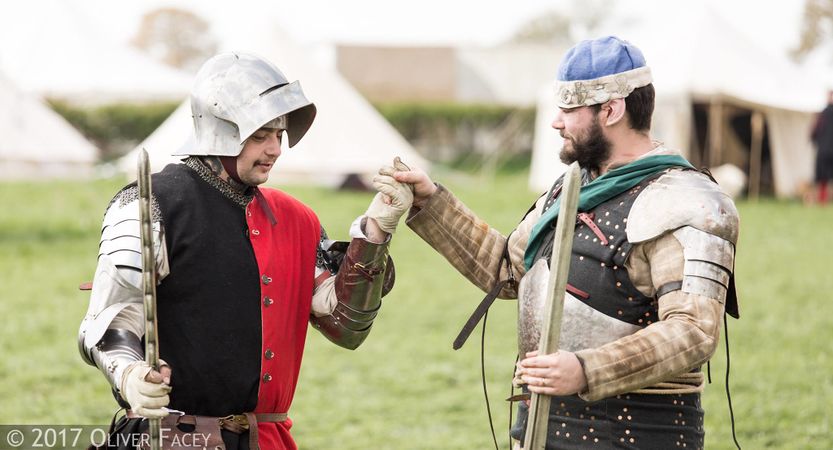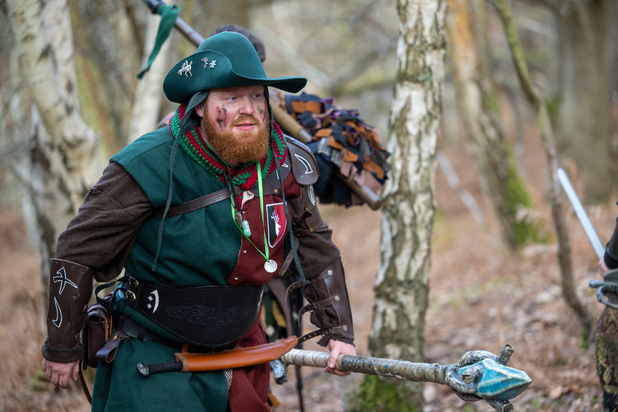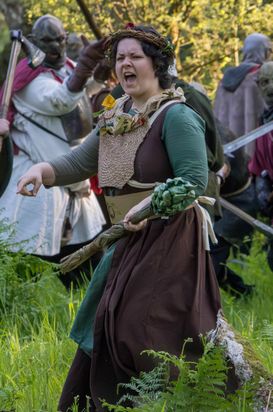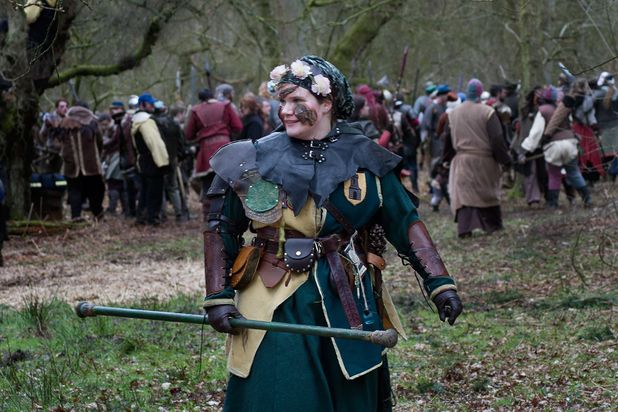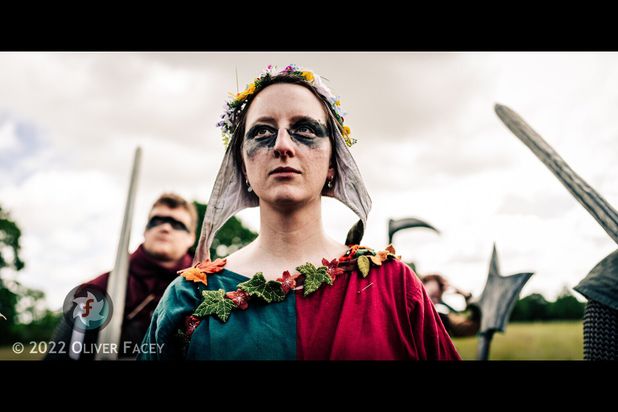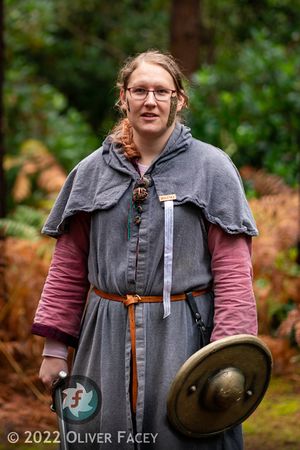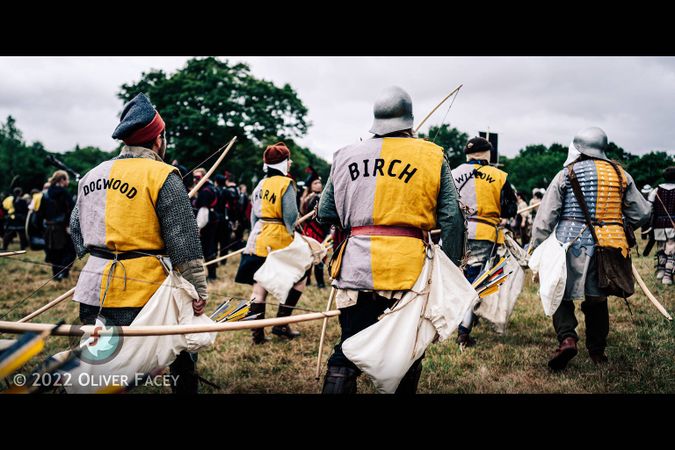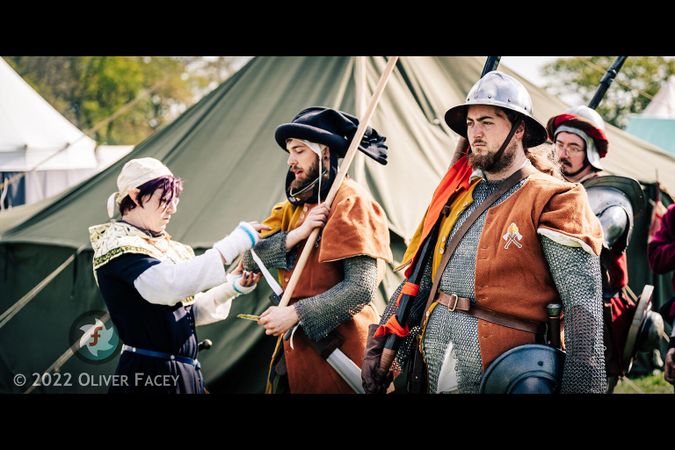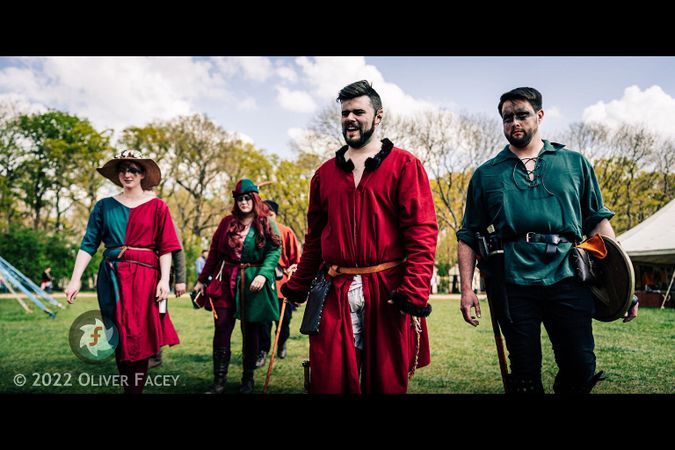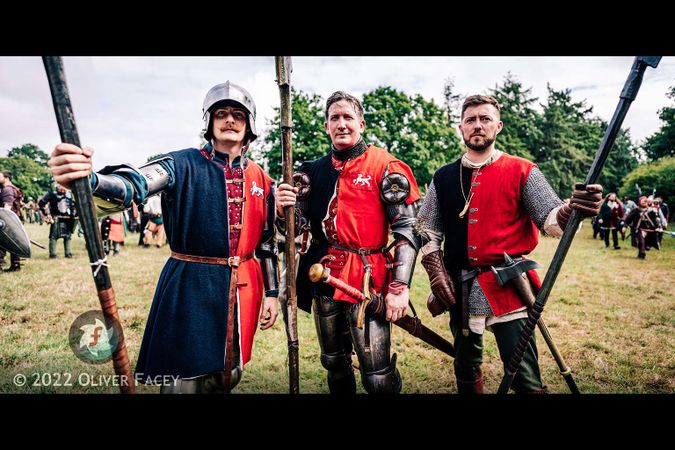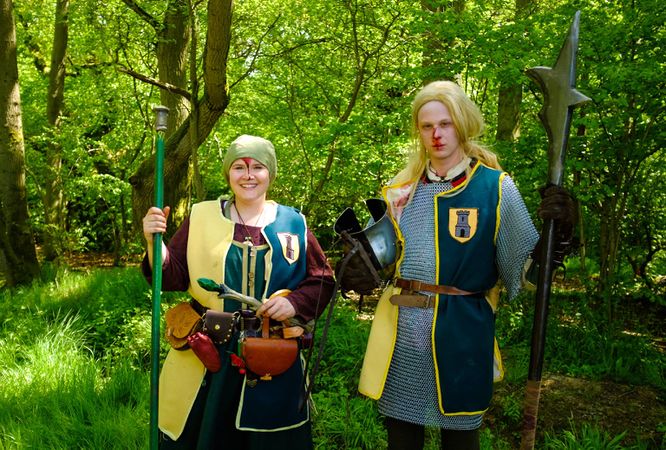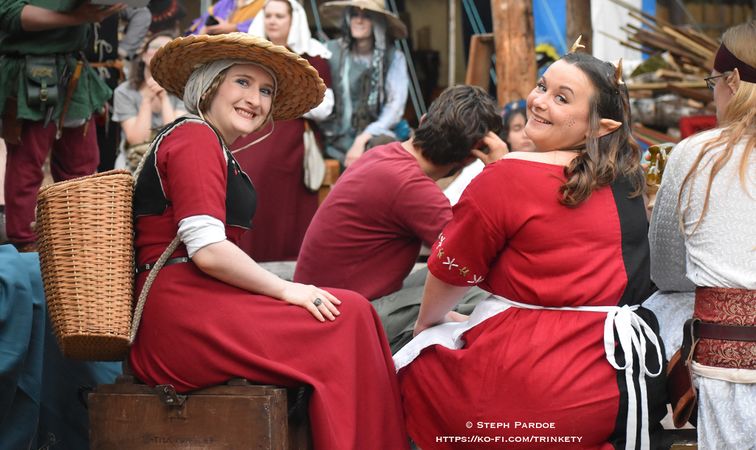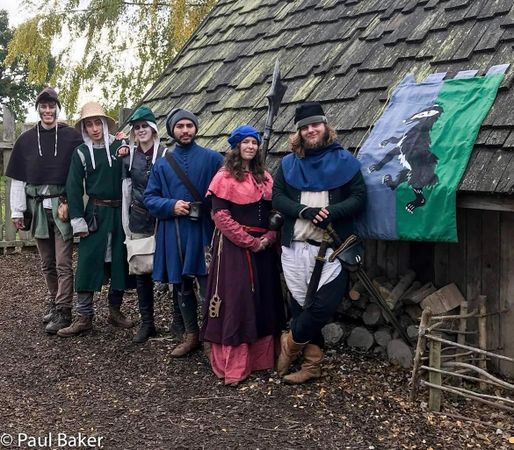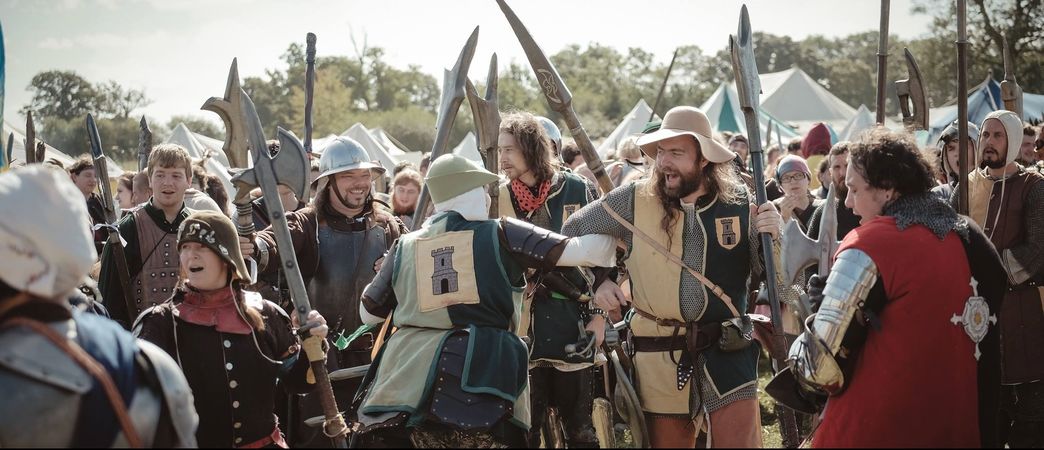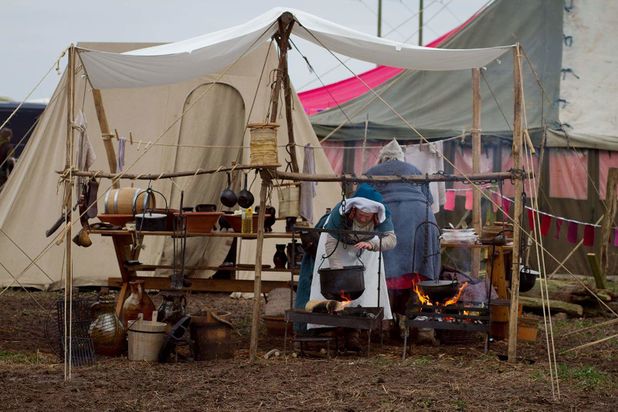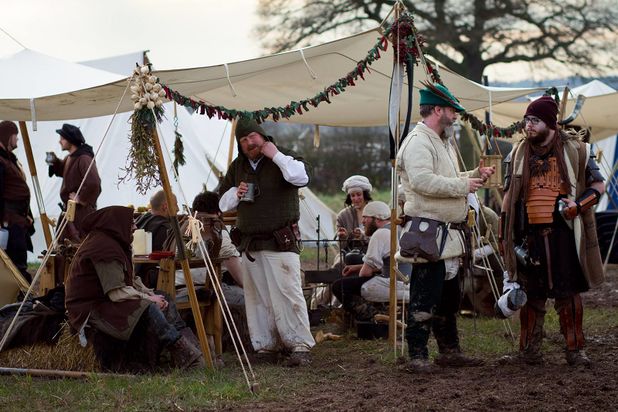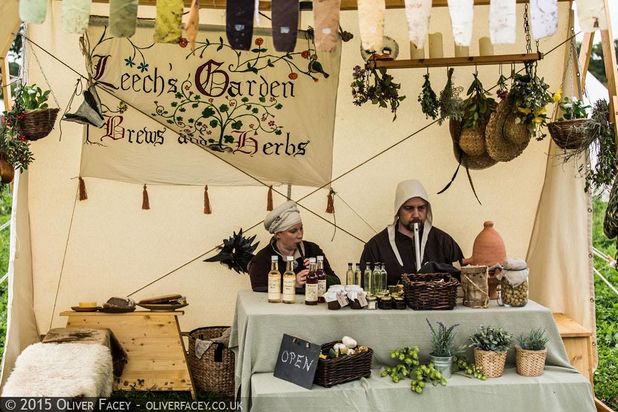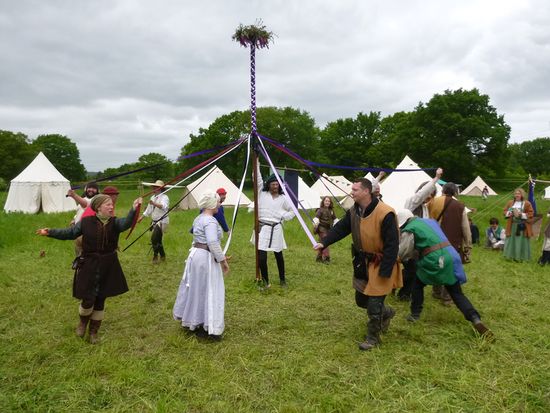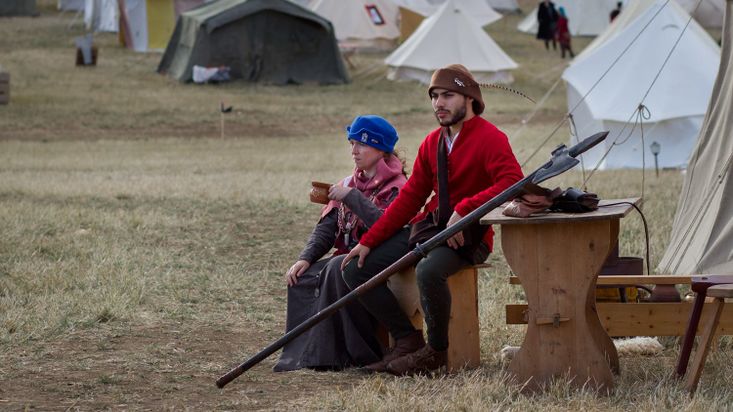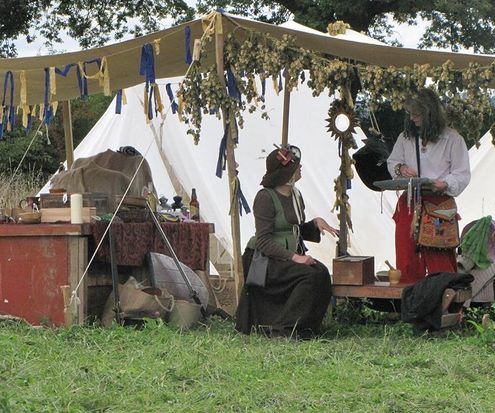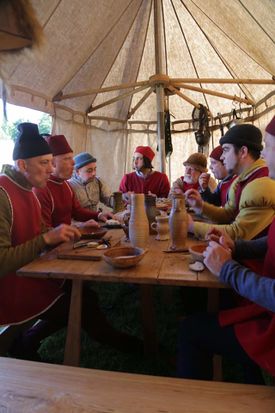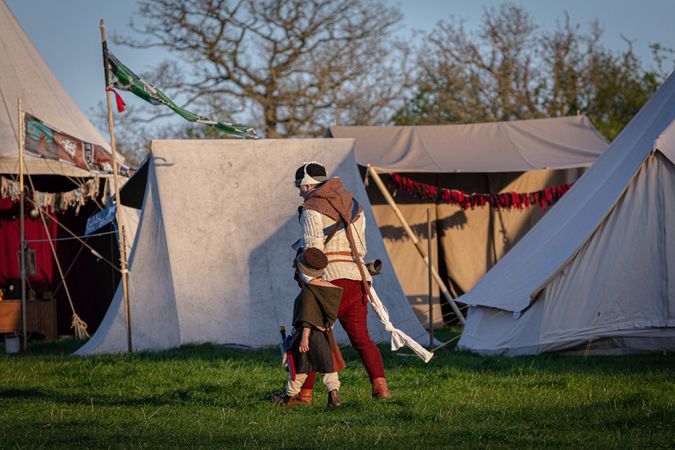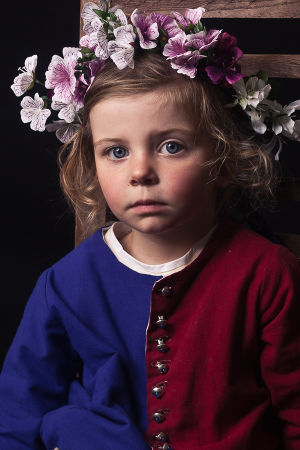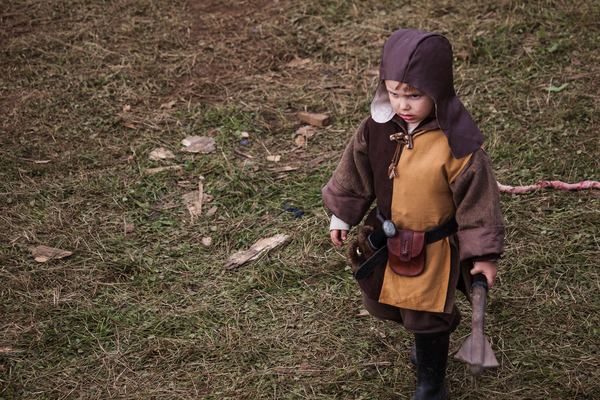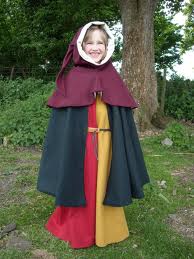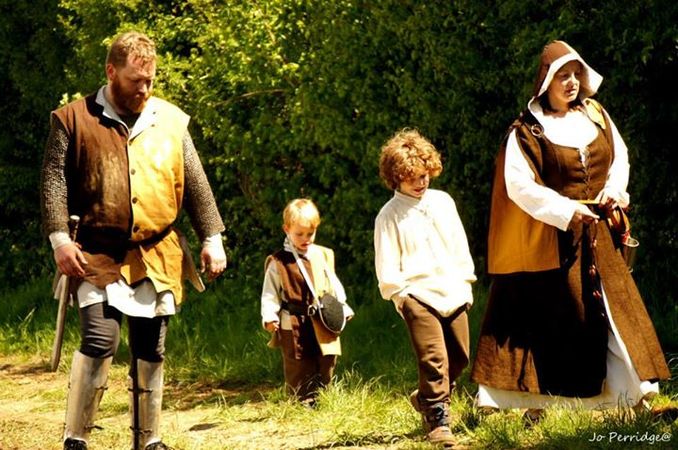The Marches look and feel
Overview
Gritty, solid, practical, traditional, mud, blood, green fields, rural, iron.
The Marches draws strongly on English history from the 12th century through to the War of the Roses for costume, weaponry and armour.
The costume of the Marches has a 'solidity' to it, a worn, lived-in look that contrasts with its neighbour Dawn's high romance, gleaming plate and vivid hues. The Marches is Kenneth Brannagh’s Henry V rather than Laurence Olivier’s.
Breakdown
Influences
Wars of the Roses England, Rangers of Ithilien (Beaters), Cadfael (Monks and Landskeepers).
Materials
Wool, calico, linen, leather.
Colours
Plain flat colours, mostly the soft colours of natural dyes or unbleached cloth. The palette is autumnal suggesting natural dull blues, greys, browns/rusts, mustards and greens, dull reds etc. especially at the lower end of the social scale. Wealthier Marchers may use deeper, brighter shades.
Clothing
Marchers favour plain clothes, tunics, simple hoods, hose and shirts. Wealthier characters might wear finer robes, cotehardies or a simple doublet, but even then plain wool or heavy linen will be more appropriate than fancy patterns or embroidery. Medieval re-enactments are a great source of inspiration for the look and feel of the Marches territories - although unlike history, its worth noting that Marches society is gender neutral. Marcher leg wear is practical and slim fitting. Close fitting trousers are practical and easy to come by or make. Hose, either joined or split, are worn with braies and a long shirt. An extremely simple untailored cut for shirts fits the Marches very well: Full in the body and sleeve, possibly gathered at neck and wrist. Doublets are popular in the Marches, a snug-fitting buttoned jacket that is shaped and fitted to the body. It can be worn over the shirt or under another layer of clothing. They tend to be short and simple – fancy slash work doesn't really fit the Marchers practical approach.
A woollen or heavy linen overdress such as a kirtle or cotehardie over a shirt or shift is be a good alternative to shirts and hose. The look is long, lean and smooth and laced to fit. Back lacing shows higher status and gives a better line. Side lacing is more common. It would be rare to see a gathered skirt (common to Tudor kirtles) in the Marches.
Marchers prefer pouches to pockets – bollock or kidney pouches or leather bags are perfect. Belts are often very long, wrapped round, looped at the front and left to dangle. The typical clothing of monks and friars consists of a traditional plain monk's habit.
Hats
Headwear is frequently worn, from a simple cap or coif, to hats or something like a hood with liripipe or a chaperon.
Stewards
The head of a household, a steward, may wear richer colours, but most likely in home grown wool not rarer silk. Wealthy Marchers may show their wealth with ornamentation, while maintaining the practical styles favoured by all yeomen. Rich Marchers are often seen in full harness of plate in battle.
Beaters
Beaters are skilled trackers and gamekeepers. They watch the borders of the Marches. They are inspired by the classic British archers of the period mixed with the Rangers of Ithilien from Lord of the Rings. Beaters usually wear lighter armour, either just a padded or leather jack or else a leather tunic like the ones worn by the Rangers in Lord of the Rings.
Alders and Townsfolk
Many alders take great pride in their ceremonial chains of office, sometimes referred to as "Chains of Prosperity". Some go so far as to commission them as magical items, such as an Alder's Edge.
Monks and Friars
Monks and friars of all genders wear traditional plain monk's habit either in dark colours, or white with a dark scapular. A simple brown cassock works well but it might also be seen in black or grey. A more complex arrangement with dark scapular over white undergarments is also a popular choice. A chasuble or cowl may be worn over the habit, in particular during the cold seasons, but monks and friars alike tend toward simple outfits.
Landskeepers and Mummers
Some landskeepers wear robes, similar to the monk, but hose, jerkin, and a shirt with rolled-up sleeves is just as good an alternative. A landskeeper is well used to hard work in the fields and their look reflects that. By contrast, Mummers are more likely to wear flamboyant costumes as suits magicians whose tradition involves performing plays.
Weapons and Armour
Weapons
The classic Marcher fighting unit is a block of bills and other polearms recruited from the yeomanry. Two handed swords are common for richer characters in heavier armour, as well as warhammers, maces or poleaxes. Any historical weapons from the Hundred Years War and the War of the Roses are typical: poleaxes, bills and other polearms are iconic; warhammers, bollock daggers, axes, falchions and mauls.
Bows
Bows, in particular longbows, are also a common sight among the Marchers units on the battlefield. They are especially popular with beaters.
Armour
Poor Yeomen may wear just a plain coloured jack or padded gambeson as their only armour. Wealthier Yeomen usually have livery coats in their household colours and mail or plate over the top if they have it. Brigandine is an intermediate option. Households often wear matching livery coats, although simple sashes or badges are also used to denote affiliation
Mage Armour
Mage armour is often from similar materials - fabric, leather and possibly pieces of chain mail - in both natural and household colours, but is more likely to be adorned and decorated with elements of no immediately obvious use.
Shields
Large shields are much less common than in other nations; shield-walls are seen as a tactic best left behind in Dawn. Marchers who have a good reason not to use a polearm or a great sword, such as martial Landskeepers fearing arrows, or skirmish groups protecting the flanks will often use a small buckler to go alongside their weapon of choice.
Household
Any Marcher who owns farmland is a member of a household, albeit perhaps a household of one, and any Marcher Household can declare a livery. Members of the household tend to wear the livery colours in some way. Stewards of a household that allies to a more powerful household usually retain their own livery, or combine it with the new households’ colours in some way. Households often wear matching livery coat or jackets, although simple sashes or badges are also effective ways of showing affiliation. Many households own a banner showing their livery.
Camps
Gates and doors are traditionally decorated with woven bundles of grain on either side, the respect shown to the land prevents evil doers from entering. The hearth is where food taken from the land is prepared. It is the core of a Marcher home and should always be kept clean, ideally decorated with fresh cut flowers to prevent food cooked there causing a poison of the blood. Poor March Folk or those on campaign will make do with bundles of grass or common meadow flowers.
Children
Children in the Marches can be dressed in scaled down versions of their parent's clothes. For toddlers and babies, traditional smocks, or simple t-tunics and drawstring trousers are simple and easy to pull-on garments, that can be made in linen or cotton for easy washing! These types of clothes also have plenty of flexibility in terms of size, meaning you'll get more than one year's use out of them. Small coifs are great for keeping the sun off a baby's head and simple straw hats can also be used to stop children burning. Older children can either have their own costumes, or be given adult clothes which are then rolled up and belted to fit - the practical Marchers are unlikely to waste any clothing and hand me downs are a cheap (in and out of character!) way to clothe children.
General tips for costume for children:
- Robes that stop at knee - mid-calf will be less of a trip hazard
- Headgear that can be very simply retied is great
- Avoiding things that can pull around the neck is wise (strings on cloaks/hats on cords/ tabards that don't secure under the arms
- Wider neck holes, sleeves and armholes will help with getting costume on and off, and leave room for growth
Inappropriate Costume
Whilst this look and feel page provides the ideal costume for the nation, it is important for players to familiarise themselves with the general costume rules for further guidelines, including those for inappropriate costume
Further Reading
Core Brief
Additional Information
